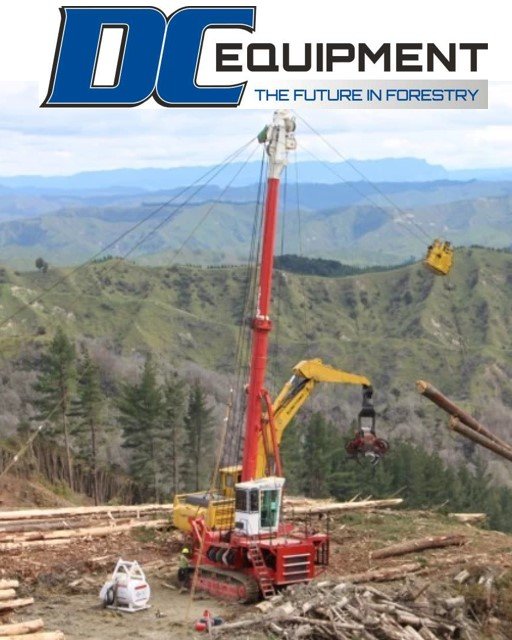Connecting huge forestry machines to SWARM
Wood is one of the most important, versatile and environmentally sustainable building materials on the planet. When it is produced sustainably, with trees being replanted after harvesting, the production of wood actually removes tons of Co2 from the atmosphere. That’s because wood is 45% made of carbon.
The world consumes over 2.03 billion cubic meters of wood every year and this is growing at a rate of 5%. Wood is a natural product that can degrade quickly, back into the soil, to sequester carbon, when we are done with it.
New Zealand, with its long sunshine hours and high rainfall excels at sustainably growing trees. A typical forest in New Zealand can produce a pine tree, ready for harvesting, in just 29 years.
A large proportion of forestry in New Zealand takes place on rugged, inaccessible hill country, which has made forestry a notoriously dangerous industry. That was until companies, such as DC Forestry Equipment, developed ingenious machinery that allows the remote harvesting of logs, on mountainous country, by operators safely out of harm’s way.
DC manufactures, and exports a range of large mechanized logging equipment. These machines help save lives while increasing forestry efficiency.
DC’s cutting edge machines generate a large amount of data; both production data and machine telemetry. This data could be used by DC and its customers to optimize their forestry operations, and their machine maintenance, if it can be brought more easily back to DCs management systems located in Nelson. However with the machines typically operating well outside cellular coverage, it has never been economic to connect them to the internet of things and allow that data flow. The Inmarsat BGAN network frequently does not operate reliably in the deep valleys DC machines are operated in. So historically the machine telemetry was only able to be recovered manually by a technician after a long drive into a forest.
DC came to ioSphere because they’d heard about the universal IoT gateway that ioSphere has developed for SWARM. DC gave ioSphere the challenge of installing a gateway on one of their largest machines, called a Tower Hauler, and bringing back the machine’s production data (hourly log tally, average length of haul and average speed of log haul) back over the new SWARM satellite network. (Eventually this will be extended to general machine telemetry such as engine hours, oil pressure etc…).
To understand what a tower hauler is, think of a chair lift, on a ski field, powered at one end by a huge tower that is mounted on tracks. Instead of chairs there is one remote controlled grapple that can reach down, grab and then haul two or three logs at a time up a steep hill. The whole system is controlled by an operator looking at a bank of screens, safely in the cab at the top or bottom of the slope.
In early July, Stephen Irons, ioSphere’s CTO, travelled to a very muddy forest near Nelson to install an ioSphere universal gateway onto one of DC’s tower haulers. The installation went smoothly and the gateway has performed flawlessly.
Before Stephen’s trip the ioSphere team configured the gateway firmware to communicate with a DCE data logger on the tower hauler. The communication protocol in this installation is J1939.
The gateway installation in the tower hauler took a small amount of time and it immediately established a reliable connection to the network of 160 SWARM satellites passing overhead.
The team had a few concerns around the extreme environment the ioSphere gateway was being deployed into. One concern was the very noisy radio frequency environment on board the machine, which could impact the gateway’s ability to send data.
Another concern was the high level of machine movement and vibration that the gateway would have to withstand.
Finally there was the concern around the internal operating temperature of the tower hauler itself, which is already exceeding 65 degrees Celsius during winter months.
So far the gateway has performed in line with the team’s best expectations. The vibrations and heat have not affected the gateway at all. More importantly the gateway is doing a very good job of communicating with the SWARM satellites, despite the high background radio noise on the tower hauler.
“The success of this very challenging deployment paves the way for ioSphere gateways to now be deployed in a myriad of other remote forestry, earth moving and mining machines” says Stephen Irons.



